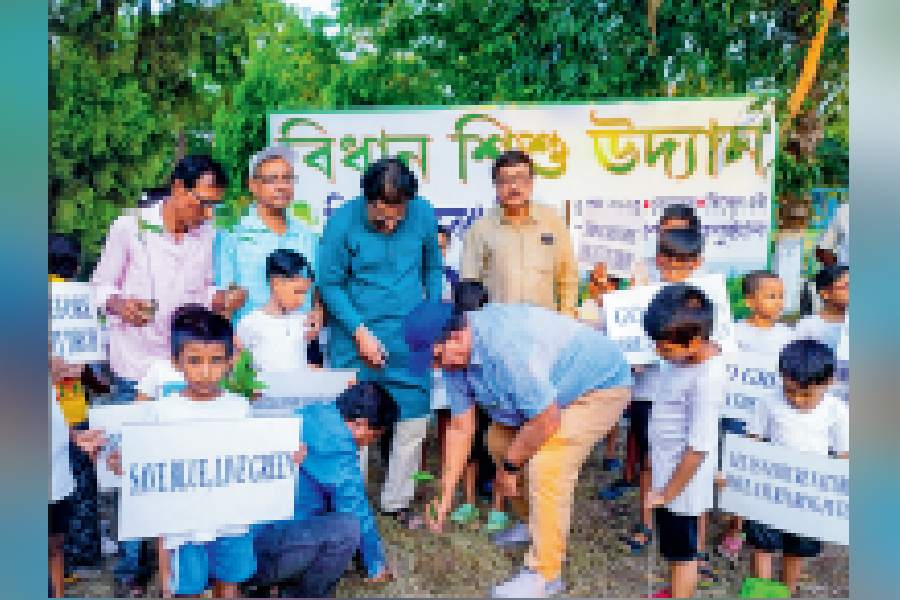Bidhan Sishu Udyan celebrated World Environment Day by planting trees brought in from the Sundarbans on its campus.
A total of 35 sundari trees and 10 kakra trees, brought from the Sunderbans with permission from the forest department were planted on June 5, under the supervision of Secretary Gautam Talukdar. Attending the event were Tapan Misra, former senior advisor at Indian Space Research Organisation (ISRO), and several academicians and environment activists.
“Sundari trees are the identity of the Sundarbans and cutting them in the name of development will result in a ban (forest) which won’t remain sundar (beautiful),” said Utpal Chakraborty, headmaster of Belgachhia Manohar Academy.
“So to make up for the felled trees in the Sundarbans, we are trying to plant them here so they aren’t limited to a particular area. People question if Sundari trees can survive in the city but they forget that once upon a time Calcutta was a part of the Sundarbans, before urbanisation pushed the forest away. In Pramathanath Bishi’s novel Keri Saheber Munshi, we have read how tigers used to roam in the Park Circus area back in the day.”
Pranab Kumar Gayen, teacher at Sailendra Sarkar Bidyalaya, mentioned how much more effective and economical it is to plant kakra trees by the water than spending lakhs of rupees building the banks.
“Kakra trees grow on the river side where the banks get eroded. Their roots strengthen the bank. Planting them secures river banks as well as creates more greenery,” said Gayen.
Talukdar pointed to a unique characteristic of kakra trees. “It grows a branch to support itself in case the trunk leans to a side due a storm or some other interference. We are planting it on the bank of our pond as an experiment to see how it helps in soil stabilisation. If it is successful, the tree can be used to play a role in arresting soil erosion on riversides. Mangrove roots are said to have been found at Esplanade during excavation for Metro Railway. So this entire area was part of the hinterland of the Sunderbans. In fact, old documents mention this area to be under the Sunderban mauza,” he said.
Misra lauded the event and the venue as he felt the city doesn’t provide sufficient playing opportunities for children. “Bidhan Sishu Udyan is in the heart of Calcutta and looks after both children and the environment,” he said.
“The way the management here has continued to work towards educating the new generation while integrating learning with entertainment and games is truly remarkable,” he said.
Children recited in between the speeches and finally Sujit Sarkar, a retired teacher of Acharya Prafulla Chandra High School for Boys in BK Block, delivered the vote of thanks.
“Our duty doesn’t end with the planting of trees. We have to look after them too. We can’t call ourselves nature lovers or responsible citizens if we plant trees now and then pluck flowers and leaves from them later,” Talukdar summed up.
